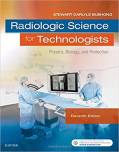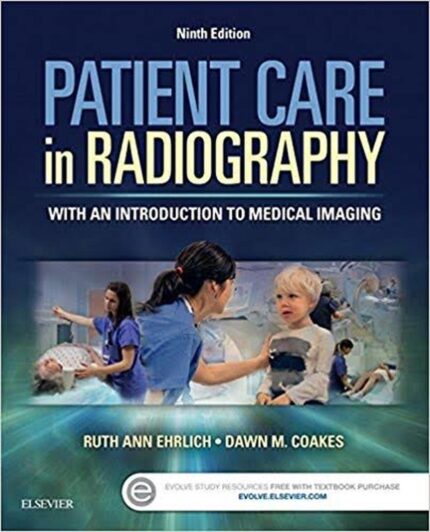Test Bank for Radiologic Science for Technologists 11th Edition by Bushong
MULTIPLE CHOICE
- Matter is measured in .
- kilograms
- joules
- electron volts
- rems
ANS: A
Matter is measured in kilograms.
DIF: Easy REF: p. 3 OBJ: Recognize the unit of measurement for matter.
- Energy is measured in .
- kilograms
- joules
- electron volts
- B or C
ANS: D
Energy is measured in joules or electron volts.
DIF: Moderate REF: p. 4 OBJ: Recognize the unit of measurement for energy.
- Atoms and molecules are the fundamental building blocks of .
- energy
- radiation
- matter
- gravity
ANS: C
Atoms and molecules are the fundamental building blocks of matter.
DIF: Moderate REF: p. 3 OBJ: List the fundamental building blocks of matter.
- Ice and steam are examples of two forms of .
- matter
- radiation
- energy
- work
ANS: A
Ice and steam are examples of two forms of matter.
DIF: Difficult REF: p. 4 OBJ: Describe states of matter.
- The formula E=mc2 is the basis for the theory that led to the development of .
- x-rays
- electromagnetic radiation
- nuclear power
- cathode ray tubes
ANS: C
The formula E=mc2 is the basis for the theory that led to the development of nuclear power.
DIF: Difficult REF: p. 5 OBJ: Understand the theory of energy-mass equivalence.
- Radio waves, light, and x-rays are all examples of energy.
- nuclear
- thermal
- electrical
- electromagnetic
ANS: D
Electromagnetic energy includes radio waves, light, and x-rays as well as other parts of the spectrum.
DIF: Difficult REF: p. 4 OBJ: List types of electromagnetic energy.
- A moving object has energy.
- potential
- kinetic
- nuclear
- electromagnetic
ANS: B
A moving object has kinetic energy.
DIF: Moderate REF: p. 4 OBJ: Identify various forms of energy.
- What is the removal of an electron from an atom called?
- Ionization
- Pair production
- Irradiation
- Electricity
ANS: A
The removal of an electron from an atom is called ionization.
DIF: Moderate REF: p. 5 OBJ: Understand ionization of matter.
- Ionizing radiation is capable of removing from atoms as it passes through the matter.
- neutrons
- protons
- electrons
- ions
ANS: C
Ionizing radiation is capable of removing electrons from atoms as it passes through the matter.
DIF: Moderate REF: p. 5
OBJ: Describe the process of ionization by ionizing radiation.
- The energy of x-rays is .
- thermal
- potential
- kinetic
- electromagnetic
ANS: D
X-rays are a form of electromagnetic energy.
DIF: Difficult REF: p. 5 OBJ: List the category of energy of x-rays.
- The biggest source of man-made ionizing radiation exposure to the public is .
- atomic fallout
- diagnostic x-rays
- smoke detectors
- nuclear power plants
ANS: B
Medical x-ray exposure is the biggest source of man-made radiation.
DIF: Difficult REF: p. 6
OBJ: Understand the relative intensity of ionizing radiation from various sources.
- In the United States, we are exposed to mR/year of ionizing radiation from the natural environment.
a. 0–5
b. 5–20
c. 20–90
d. 100–300
ANS: C
We are exposed to 20–90 mR/yr of ionizing radiation from natural environmental sources in the United States.
DIF: Difficult REF: p. 6
OBJ: Understand the amount of natural environmental ionizing radiation to which the public is exposed in the United States.
- The basic quantities measured in mechanics are , , and .
- volume, length, meters
- mass, length, time
- radioactivity, dose, exposure
- meters, kilos, seconds
ANS: B
The basic quantities measured in mechanics are mass, length, and time.
DIF: Easy REF: p. 12 OBJ: List the basic quantities measured in mechanics.
- An example of a derived quantity in mechanical physics is a .
- meter
- second
- dose
- volume
ANS: D
Volume is a derived unit.
DIF: Moderate REF: p. 12 OBJ: Recognize an example of a derived quantity.
- is a special quantity of radiologic science.
- Mass
- Velocity
- Radioactivity
- Momentum
ANS: C
Radioactivity is a special quantity of radiologic science.
DIF: Easy REF: p. 14
OBJ: Recognize radioactivity as a special quantity of radiologic science.
- Exposure is measured in units of .
- becquerel
- sieverts
- meters
- grays
ANS: D
Exposure is measured in units of grays.
DIF: Moderate REF: p. 14 OBJ: Understand units of radiation measurement.
- Today, radiology is considered to be a(n) occupation.
- safe
- unsafe
- dangerous
- high-risk
ANS: A
Today, radiology is considered to be a safe occupation because of effective radiation protection practices.
DIF: Moderate REF: p. 10 OBJ: Understand the risk of an occupation in radiology.
- What does ALARA mean?
- All Level Alert Radiation Accident
- As Low As Reasonably Achievable
- Always Leave A Restricted Area
- As Low As Regulations Allow
ANS: B
ALARA means As Low As Reasonably Achievable.
DIF: Moderate REF: p. 10 OBJ: Understand the meaning of ALARA.
- Computed tomography was developed in the .
a. 1890s
b. 1920s
c. 1970s
d. 1990s
ANS: C
Computed tomography was developed in the 1970s.
DIF: Moderate REF: p. 10
OBJ: Relate history of the development of computed tomography.
- Filtration is used to .
- absorb low-energy x-rays
- remove high-energy x-rays
- restrict the useful beam to the body part imaged
- fabricate gonadal shields
ANS: A










